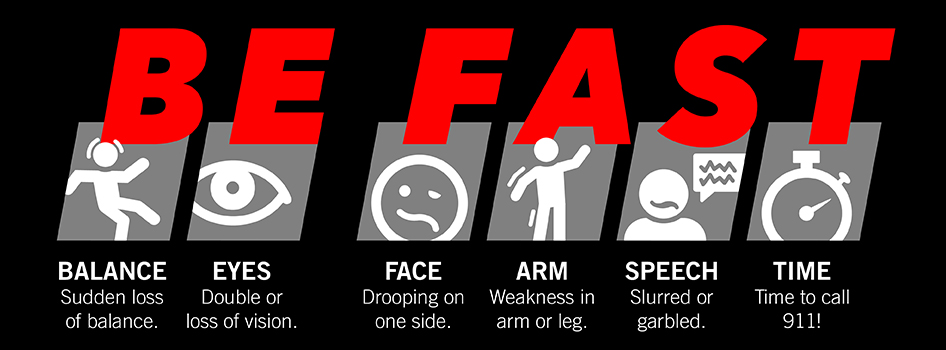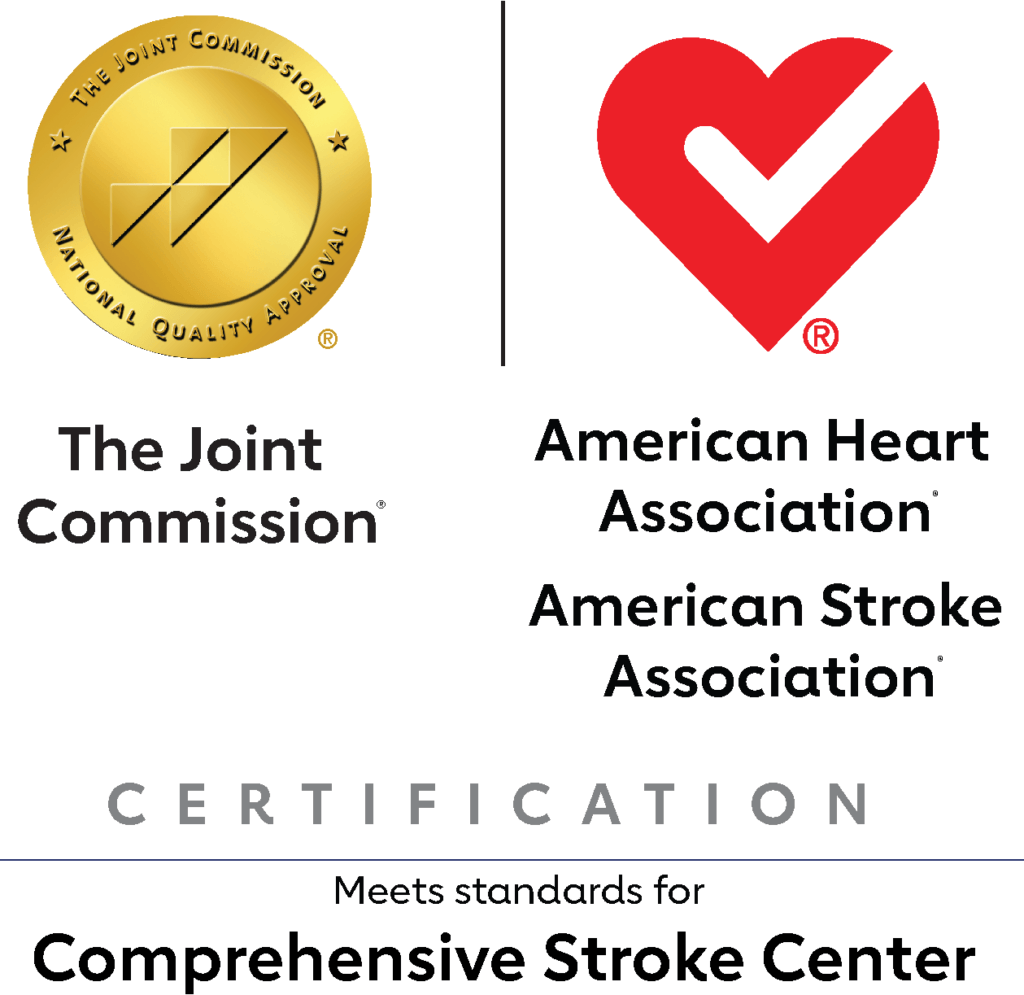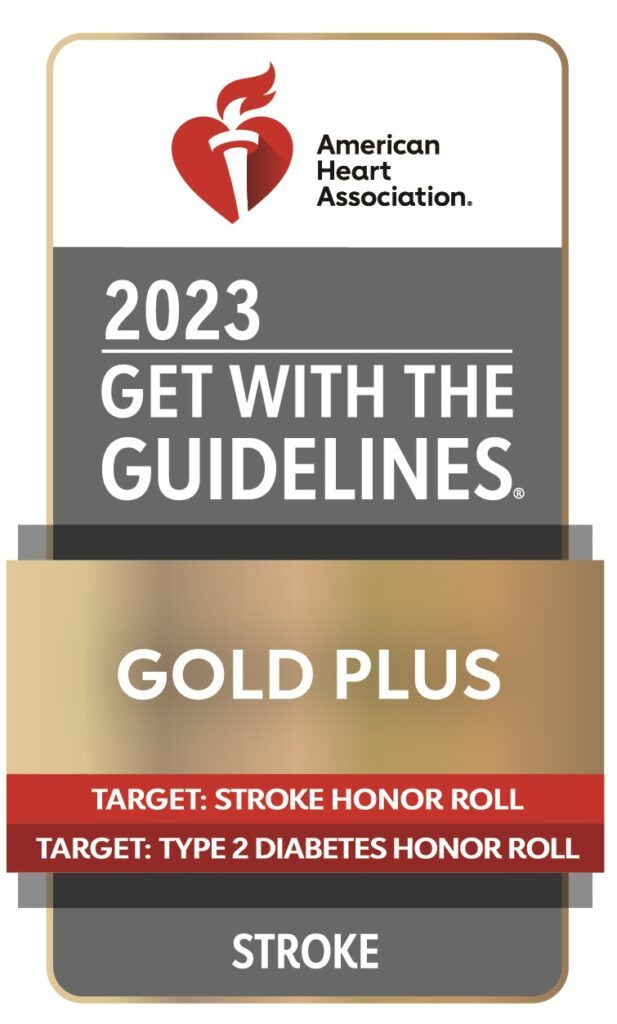
Hemorrhagic Stroke
Hemorrhagic Stroke Overview
Hemorrhagic stroke occurs when blood escapes from a damaged or weakened blood vessel in the brain. This causes pressure and swelling that compresses surrounding brain tissue, resulting in damage and death to brain cells that can cause lasting neurological complications.
There are two kinds of hemorrhagic stroke:
- Intracerebral hemorrhage – a blood vessel bleeds or ruptures leaking blood into the surrounding brain tissue deep within the brain
- Subarachnoid hemorrhage – a blood vessel on or near the surface of the brain ruptures causes bleeding into the space between the brain and the tissues that cover and protect the brain.
Two of the most common causes of hemorrhagic stroke are a ruptured aneurysm or a ruptured arteriovenous malformation (AVM).
There are some things that make it more likely that you could have a hemorrhagic stroke. These risk factors can be modifiable (things you can change or manage to reduce your risk) and unmodifiable (things you cannot change).
Unmodifiable Risk Factors for Hemorrhagic Stroke
- Age over 40
- Family history of aneurysms
- Gender (women are more likely to experience a brain hemorrhage)
- Race (there is an increased risk of brain hemorrhage among people of color)
Modifiable Risk Factors for Hemorrhagic Stroke
- Arteriovenous malformation or hereditary hemorrhagic telangiectasia
- Excessive alcohol use
- Head trauma
- High blood pressure
- Infection
- Smoking and tobacco use
- Use of cocaine or other drugs
Recognizing a stroke quickly and calling 9-1-1 leads to faster diagnosis and treatment and better recovery. People should “BE FAST” when it comes to stroke.
Here’s how to BE FAST:
- B – BALANCE: Ask the person to walk. Do they have trouble keeping their balance or walking normally?
- E – EYES: Ask the person about their eyesight. Have they lost vision or experienced vision changes in one or both eyes?
- F – FACE: Ask the person to smile. Does one side of the face droop?
- A – ARMS: Ask the person to raise both arms. Does one arm drift downward?
- S – SPEECH: Ask the person to repeat a simple phrase. Is their speech slurred or strange?
- T – TIME: If you observe any of these signs, call 9-1-1 immediately.


Hemorrhagic Stroke Symptoms
The signs of a hemorrhagic stroke depend on the side of the brain that is affected, the part of the brain affected, and how severely the brain is injured. Therefore, each person may have different stroke symptoms.
The hallmark sign of a hemorrhagic stroke is known as a thunderclap headache. The onset of these headaches is sudden, and often are described as being the worst headache pain a person has ever felt.
Other symptoms of hemorrhagic stroke may include:
- Blindness in one or both eyes
- Blurred vision
- Pain above and behind the eye
- Facial droop
- Intolerance to light
- Loss of ability to understand or express speech
- Partial or total loss of consciousness
- Stiff neck
- Sudden numbness or weakness of face, arm or leg, especially on one side of the body
- Vertigo
- Visual field deficits
- Vomiting or severe nausea, when combined with other symptoms
- Urinary incontinence
- Seizure
Hemorrhagic stroke is a medical emergency. If you or someone you know has these symptoms, call 9-1-1 immediately.

Hemorrhagic Stroke Treatments
It is critical to treat hemorrhagic stroke quickly to preserve as much brain tissue as possible.
Generally speaking, the first phase of treatment for hemorrhagic stroke is dedicated to stabilizing vital signs and stopping the bleeding within the brain. Steps may be taken to reverse the effects of blood thinning medications to allow a clot to form. Measures may also be taken to lower blood pressure, reduce or prevent seizures, reduce swelling in the brain, and prevent blood vessel spasms.
In some cases, surgery may be needed to remove clotted blood that is putting pressure on the brain, or to repair the defect in the artery that has hemorrhaged. Surgery or neuro-endovascular treatment (treatment using catheters and devices passed through the arteries) may also be used to repair an aneurysm or AVM that is likely to bleed again.
Neuro-Rehabilitation after Hemorrhagic Stroke
Many people who have had a hemorrhagic stroke will need neuro-rehabilitation to help them regain function lost as a result of their stroke.
Neuro-rehabilitation helps stroke survivors regain brain functions and become as independent as possible. Rehabilitation does not reverse brain damage, however, it can help people achieve the best possible long-term outcome.
Rehabilitation treatments will vary for each person depending on the location in the brain and the severity of their stroke. It can be provided in an acute care hospital, a rehabilitation hospital, or an outpatient setting.
Rehabilitation can last from one month to more than two years and involves numerous physicians, nurses, and therapists. Learn more about the Stroke Neuro-Rehabilitation Program at Barrow.
Additional Information on Hemorrhagic Stroke
Is hemorrhagic stroke preventable?
Hemorrhagic stroke is preventable. Around 80% of strokes could be prevented by lifestyle and behavior modification and control of healthcare conditions like diabetes, obesity, and high cholesterol. If you have any of the following risk factors, speak to your doctor about it. They will work with you to help get them under control and reduce your risk of stroke.
- Smoking
- High blood pressure: systolic blood pressure greater than 140 mm/Hg; diastolic blood pressure greater than 85 mm/HG
- Diabetes: hemoglobin A1c, an index on how blood sugar is controlled, should be less than 5.7%
- Hypercholesterolemia: Your “bad cholesterol”, LDL, should be around 70 mg/dL
- Physical inactivity and obesity
- Excessive alcohol consumption
How common is hemorrhagic stroke?
Nearly 800,000 people suffer a stroke each year, but only 13 percent of all strokes are hemorrhagic strokes. However, hemorrhagic strokes are responsible for 40 percent of all stroke deaths.
Who gets hemorrhagic stroke?
Hemorrhagic strokes can occur at all ages but are more likely to occur in young people than are ischemic strokes. Hemorrhagic strokes account for about 50 percent of strokes that occur in children.
How is hemorrhagic stroke diagnosed?
Determining whether a stroke is hemorrhagic or ischemic in the initial stages is critical because the treatment for each condition is vastly different. However, symptoms alone are not specific enough to distinguish an ischemic stroke from a hemorrhagic stroke.
To get a definitive diagnosis, medical imaging studies of the brain should be performed immediately upon arrival at the hospital or curbside in a mobile stroke unit where available. This allows doctors to pinpoint the cause of the bleeding and treat it appropriately. Ideally, diagnosis should happen within 60 minutes or less from the time symptoms are first noticed.
Additional Support + Resources for Hemorrhagic Stroke
American Stroke Association: Hemorrhagic Stroke
Medline: Ischemic and Hemorrhagic Stroke
Merck Manual
American Academy of Neurology
National Institute of Neurological Disorders and Stroke (NINDS)






